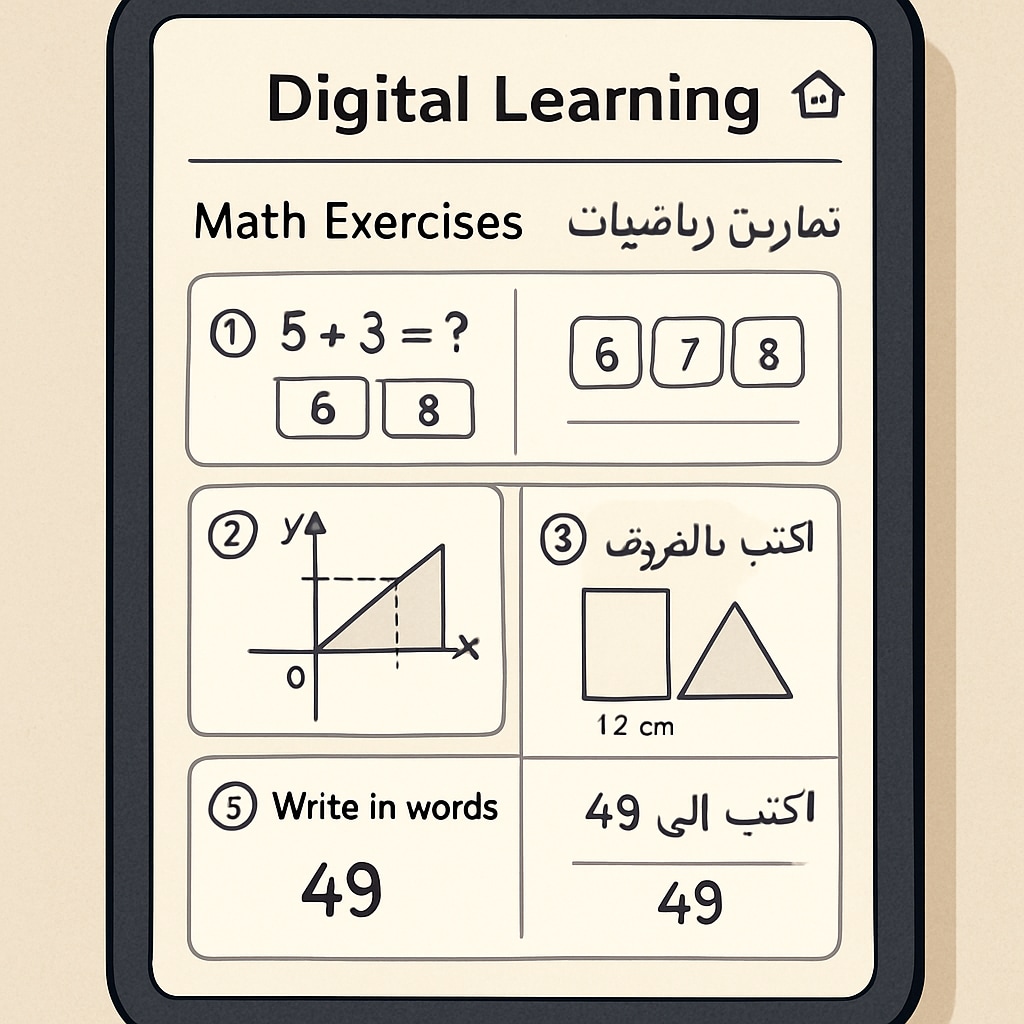High school mathematics remains a cornerstone of secondary education, yet it is often one of the most challenging subjects for students. These challenges are particularly evident in the final year, where students face complex topics such as calculus, trigonometry, and probability. For learners from diverse cultural backgrounds, including those whose primary language is Arabic, the difficulties can be compounded by language barriers and cultural differences in pedagogy. This article delves into the major teaching challenges in high school mathematics and investigates how innovative approaches in Arabic education can provide meaningful support to students.
Understanding the Core Challenges in High School Mathematics
High school mathematics presents a unique set of challenges for both students and educators. Many students struggle with abstract concepts and the cumulative nature of mathematical learning, which requires a strong foundation in earlier topics. For example, understanding calculus often hinges on proficiency in algebra and geometry. Additionally, teaching methods that cater to a one-size-fits-all approach may fail to engage students with varying learning styles.
Another significant hurdle is the lack of contextualized learning. Mathematics is often taught in isolation from real-world applications, making it harder for students to grasp its relevance. For students from Arabic-speaking backgrounds, these challenges are further magnified by linguistic barriers. Mathematical vocabulary and syntax can be particularly challenging to translate, as Arabic often has unique structures that differ from those in English or other instructional languages.

Leveraging Arabic Education to Address Mathematics Teaching Challenges
Innovative approaches in Arabic education can play a pivotal role in making high school mathematics more accessible. One effective strategy is the integration of bilingual teaching resources. By providing materials in both Arabic and the primary instructional language, educators can bridge the linguistic gap and help students better understand complex concepts. For instance, a glossary of key mathematical terms in Arabic alongside their English counterparts can significantly ease comprehension.
Additionally, incorporating culturally relevant examples into the curriculum can enhance engagement. For instance, using geometric patterns from Islamic art to teach symmetry or tessellations can make abstract concepts more relatable and inspiring. This not only reinforces mathematical learning but also celebrates the students’ cultural heritage, fostering a more inclusive classroom environment.
Modern technology also offers promising solutions. Educational apps and platforms designed specifically for Arabic-speaking students can provide interactive and personalized learning experiences. These tools often include features such as real-time translations, adaptive quizzes, and progress tracking, which cater to individual learning needs.

Practical Recommendations for Educators
To effectively address the challenges of teaching high school mathematics to diverse student groups, educators can adopt the following strategies:
- Bilingual Support: Incorporate teaching materials and resources in both Arabic and the primary instructional language.
- Cultural Integration: Use culturally relevant examples, such as Islamic art or historical Arabic contributions to mathematics, to teach core concepts.
- Technology Integration: Leverage educational apps and platforms tailored for Arabic-speaking students to provide personalized learning experiences.
- Professional Development: Offer training programs for teachers to develop skills in multilingual and multicultural teaching methodologies.
By implementing these strategies, educators can create a more inclusive learning environment that empowers all students to succeed in mathematics, regardless of their cultural or linguistic background.
Conclusion
High school mathematics, while challenging, offers rich opportunities for innovation in teaching, especially when addressing the needs of diverse learners. By integrating bilingual resources, culturally relevant examples, and modern technology, educators can transform these challenges into opportunities for growth. Arabic education innovations, in particular, hold immense potential to bridge gaps and provide equitable learning opportunities for students from Arabic-speaking backgrounds. As a result, mathematics can become a universal language that transcends cultural and linguistic barriers, unlocking new possibilities for academic and personal success.
Readability guidance: This article maintains short paragraphs, utilizes lists for clarity, and ensures a balance of sentence lengths and structures. Transition words such as “however,” “therefore,” and “for example” are used throughout to enhance flow and coherence.


